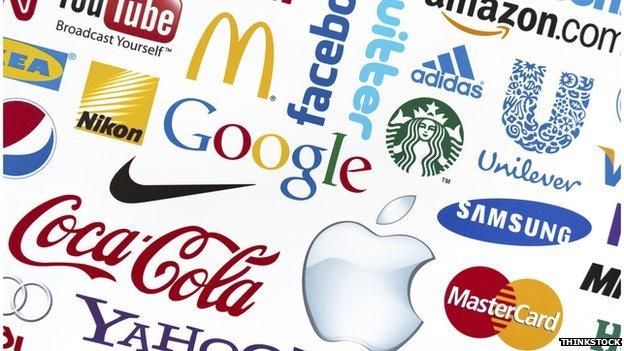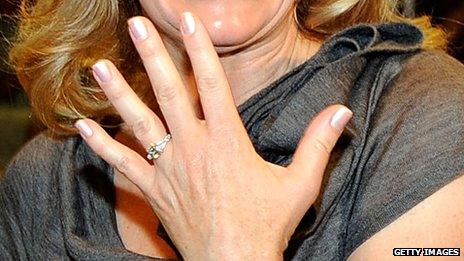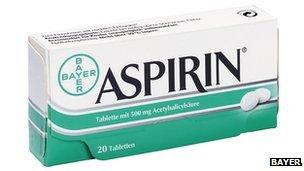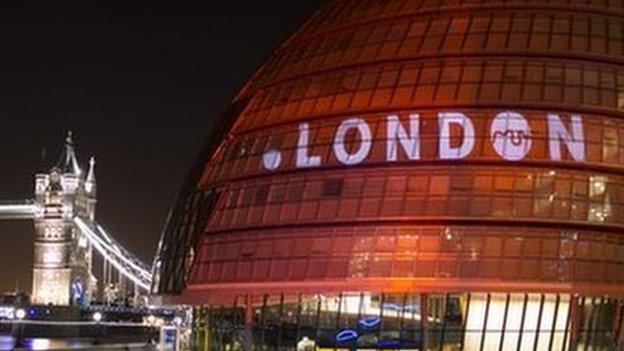'Genericide': Brands destroyed by their own success
- Published

Global brand spending is estimated at about $500bn (£300bn) each year
Turning a product into a household name is the stuff of corporate dreams. Isn't it?
Not necessarily.
Think Hoover, Jacuzzi, Frisbee.
When was the last time you "vacuum-cleanered" the front room, took a dip in a "whirlpool bath", or played in the park with your "flying disc"?
It may seem like a fairly innocuous linguistic slip to confuse brand and product - indeed, you might think it a compliment to the company behind such a successful name - but it could be the sign of a brand in its death throes.
'Badge of origin'
If consumers understand the trademark to be the name of the product itself, as opposed to identifying its exclusive source, that trademark loses its distinctiveness.
Cue rival businesses, circling the exposed brand and swooping to attach its powerful name to their own products. And if they can convince intellectual property judges that they are entitled to use it because it's now an everyday word, that trademark is dead and buried - the victim of "genericide".
"It can be a big problem, because the brand stops being a badge of origin and just becomes a generic term," says Allan Poulter, a partner in the intellectual property team at international law firm Bird and Bird.
"The brand is often the most valuable asset of a company - its exclusivity is what puts it apart. If you get to the stage where you no longer have that, the brand is finished."
Jewellery chain Tiffany & Co is in the middle of a legal battle with US wholesaler Costco, which it has accused of infringing its trademark by selling "Tiffany" engagement rings.

A diamond engagement ring from the jewellery chain Tiffany & Co
Costco has retaliated, arguing the US jewellery firm's trademark is no longer valid because, it says, "Tiffany" is now a generic term for the rings in question (solitaire-style comprising a diamond mounted on a single band with six prongs).
Worryingly for Tiffany & Co, in her ruling, external on Costco's counter claim, US district judge Laura Swain concluded there was a "genuine factual dispute" as to whether the trademark has a "primarily generic meaning in the minds of members of the general public".
Country to country differences
The case is set for another hearing in June, but if it eventually concludes in Costco's favour, Tiffany's trademark for one of the world's most famous ring settings would effectively be worthless.
It would not be the first brand to visit the trademark graveyard.
Escalator, Yo-Yo and Thermos are among those already buried, while there are numerous others arguably hovering at the gates.
For some brands, genericide is a disaster taken completely out of their hands.
German pharmaceutical firm Bayer was forced to give up its rights to the Aspirin trademark in the Treaty of Versailles, in 1919, which followed its defeat in World War One (it also lost the rights to Heroin, but in hindsight it's probably not so upset about that).
The punishment only applied to aspirin's use in victor nations the USA, UK and France, leaving Bayer's trademark still enforceable elsewhere.
Doing exactly that keeps Kristina Kersten in full-time work.
"It's definitely the mark in my portfolio with the most workload, that needs the most protection," says Ms Kersten, one of Bayer's legal advisers.
"Companies are just not aware that the situation is different from country to country. We have lots of infringement cases in Latin America where drugs are imported from the US but they're not allowed to be sold as Aspirin in countries like Brazil or Colombia.

Aspirin has been credited with preventing heart attacks and cutting the risk of some cancers
"It's a very important product for Bayer, and one of our most famous, so we spend a lot of effort defending the rights."
And there are now many more avenues from which the genericide threat can emerge.
Online monitoring
"Questions of trademark dilution have gained new prominence with the rise of e-commerce and the emergence of new market intermediaries [like eBay and Amazon]," warns the World Intellectual Property Organization (WIPO) in its latest report on global brands, external.
"It's growing to the extent that there's so much of it on the internet," Mr Poulter adds. "It's the sheer volume of it. The monitoring of infringements has certainly increased."
Google is so conscious of the problem that it has published "rules for proper usage", external of all its trademarks, partly to help stem the use of "google" as a verb.
And Twitter raised concerns about brand genericide in its initial public offering (IPO) in October 2013.
Its IPO filing, external reads: "There is a risk that the word 'Tweet' could become so commonly used that it becomes synonymous with any short comment posted publicly on the internet, and if this happens, we could lose protection of this trademark."
It's no wonder companies guard their trademarks so fiercely when, according to the consultancy Interbrand, the value of a brand like Apple is pushing $100bn, external (£59bn).
And another reason is presumably to protect huge investments - according to WIPO, the world's companies collectively pumped $466bn into branding in 2011, the last year for which there is reliable data.
And numerous forecasts for 2014 expect the figure to rise to well over $500bn.
Brand police
So what sort of defences can companies employ?
Some have launched marketing campaigns specifically designed to nip things in the bud.
A 2003 advert from photocopier firm Xerox read: "When you use 'Xerox' the way you use 'aspirin,' we get a headache."
But for those wanting to draw less attention, there's always the brand police.
NetNames trawls the internet for improper and suspected fraudulent use of trademarks, and then stamps it out.
It represents more than 2,000 companies worldwide, and about 25% of the FTSE 100 index of leading UK firms, charging anywhere from £50,000 to £200,000 per client per year.
Counterfeit 'explosion'
Chief executive Gary McIlraith says the threat to trademarks is much greater than the occasional slip of the consumer tongue or sloppy editorial.
"Anti-counterfeit work has exploded in the last few years," he explains. "Counterfeiting has become much more sophisticated and increasingly clients find their brands being infringed.
"That's where we've seen an enormous growth in our business in particular - we're set to have doubled our brand protection revenues over the last 12 months, and we doubled them the year before that."

Counterfeiting is becoming much more common online, says the International Trademark Association
Internet marketplaces, email phishing scams, and social media are pretty fertile hunting grounds, Mr McIlraith says, but mobile app stores are fast becoming the biggest offenders.
Time-consuming and inconvenient it may be, but policing infringements does not necessarily have to be costly, Mr McIlraith adds. Quite the opposite, in fact.
"In any sophisticated fraud operation, there's a small number of perpetrators making an enormous amount of money," he explains.
"If you've got a good legal team who can go after those big fish and seize assets it is possible to make an online trademark infringement profitable."
- Published21 February 2014

- Published26 March 2013

- Published11 February 2014
